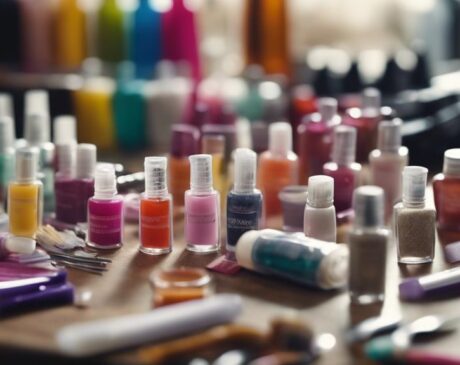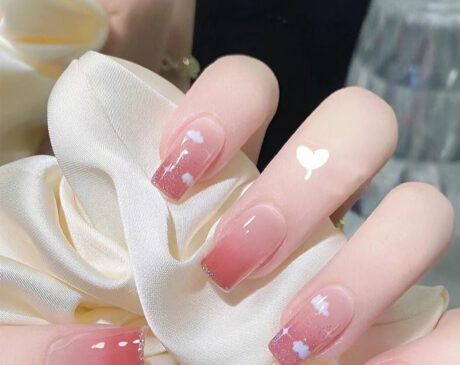What do you put on your nails after removing press on nails?

In this comprehensive guide, we delve into the important aspects of nail care after removing pressed nails. Understanding that press-on nails, while convenient and trendy, can have a significant impact on the health of your natural nails, we explore a variety of topics to ensure the best possible care and recovery for your nails. This includes an in-depth look at the effects of adhesives and materials on nail health, common issues that arise after removing press-on stickers, and steps to take immediately after removal. In addition, we emphasize the importance of nourishing treatments that focus on moisturizing and strengthening nails to keep them healthy and beautiful.
Understanding the impact of press-on nails on natural nails
The Impact of Adhesives and Materials on Nail Health
Press-on nails often require adhesives that, while effective for nail attachment, can be harmful to your natural nails. The chemicals in these adhesives can cause dryness, brittleness, and overall weakening of the nail structure. Additionally, the materials used in press-on nails sometimes form a barrier that prevents the natural nail from “breathing,” which can lead to moisture buildup and fungal infections. It is important to understand these risks in order to take proper post-removal care.
Common problems faced after nail removal
It is not uncommon for nails to become thin, brittle and break after nail removal. Some people may also notice white spots or discoloration, which indicates minor damage to the nail bed. These problems are mainly caused by the long-term wear and tear of the press-on nail and the effects of adhesives on nail health.
Steps to take immediately after press-on nail removal
Gently cleaning the nail
The first step after removing press-on nails should be a gentle cleaning. This involves removing any residual adhesive and cleaning the nails with a mild, nail-friendly cleanser. It’s important to remain gentle during this process to avoid causing additional stress or damage to delicate nails.
Assess the condition of your nails
After cleaning, take a moment to assess the condition of your nails. Look for signs of damage, such as cracking, peeling or unusual texture. This assessment will guide you in choosing the right treatments and products for your nail recovery journey.
Nourish your nails: basic treatment
Moisturize your cuticles and nails
Moisturizing is key to restoring nail health. Moisturizing your cuticles and nails with cuticle oils or creams helps restore moisture balance. Regular use of these products not only promotes healthier nails, but also prevents future dryness and brittleness.
Intensive Treatments and Oils
Incorporating nail strengthening treatments and oils into your daily regimen is essential for repairing and strengthening natural nails. Products that contain keratin or biotin can significantly improve nail strength. Additionally, natural oils such as jojoba or almond oil can penetrate the nail bed, providing deep nourishment and aiding in the recovery process.
Tips for repairing and restoring damaged nails
Natural remedies to strengthen nails
When it comes to repairing damaged nails, natural remedies are both effective and gentle. Ingredients such as lemon juice and olive oil can be used to create a homemade nail dip to strengthen and brighten nails. Lemon juice is rich in vitamin C, which promotes healthy nail growth, while olive oil has excellent moisturizing and repairing properties. Another great option is to infuse with green tea, which is known for its antioxidants that prevent brittle and broken nails. Regular use of these natural remedies can dramatically improve the health and appearance of your nails.
When to seek professional help
While many nail problems can be solved at home, sometimes professional help is needed. If you notice persistent nail problems such as severe discoloration, deep ridges, or signs of infection (e.g., redness, swelling, or pain), be sure to consult a dermatologist or professional nail technician. They can provide specialized treatment and advice to ensure that any underlying health issues are properly addressed.
The Role of Nutrition in Nail Recovery
Foods and Supplements for Nail Health
Diet plays a crucial role in nail health. To help with nail recovery, focus on a diet rich in biotin, protein, omega-3 fatty acids, and vitamins A, C, and E. Foods such as eggs, salmon, nuts and green leafy vegetables are all good choices. In addition, supplements such as biotin or collagen may be beneficial, but it is best to consult with a healthcare provider before starting any supplement regimen.
Long-Term Nail Care Strategies
Best Practices for Nail Hygiene
Maintaining good nail hygiene is essential for long-term nail health. This includes regular trimming and filing to prevent scratches and breakage, keeping nails clean and dry to avoid fungal infections, and using a gentle, acetone-free nail polish remover. Additionally, wearing gloves when doing chores that involve harsh chemicals or prolonged contact with water can protect nails from damage.
Choose a safer alternative to press-on nails
If you like the look of press-on nails but want to minimize damage, consider choosing a safer alternative. Look for press-on pieces that use gentler, non-toxic adhesives, or ones that can be clamped or attached without glue. You can also explore salon services, such as gel overlays, which offer a similar look but are typically less destructive.
Precautions for future use of press studs
Tips for Safe Application and Removal
To minimize damage when using press-on nails, it is important to apply and remove them properly. Always clean and dry nails thoroughly before use and avoid using excessive amounts of glue. When removing press studs, never force or pull on them. Instead, soak them in a warm soapy solution and gently loosen the adhesive.
Choose quality press studs
Purchase high-quality press studs that are unlikely to cause damage. Look for brands that use safe, non-toxic materials and adhesives. Read reviews and do your research to find natural nail products that are both durable and gentle.
This comprehensive guide covers essential aspects of nail care and recovery from the removal of pressed nails. Key points include understanding how press-on nails affect natural nails, the steps to take immediately after removal, and how to nourish and strengthen nails thereafter. We also emphasize the importance of nutrition for nail health and share long-term strategies for maintaining nail hygiene and choosing safer nail products. Remember, while press-on nails offer a convenient and stylish option for enhancing your look, it’s vital to prioritize the health of your natural nails. Regular care, proper application and removal techniques, and attention to the products you use can have a significant impact on keeping nails strong and healthy.
FAQs about nail care after press-on removal
What is the best nail care polish after press-on removal?
The best oils for post-press removal nail care include jojoba oil, almond oil, and vitamin E oil. These oils are great for moisturizing and nourishing the nail bed and cuticle, promoting strength and growth. Jojoba oil is especially beneficial because it mimics the skin’s natural oils so well.
How often should I care for my nails after removing the press studs?
It is recommended that you care for your nails at least once or twice a week after removing pressure nails. Regular moisturizing and treatments such as fortifying oils or creams can help restore nail health and prevent further damage.
Can I reapply the press-on patch immediately after removal?
It is best to allow your natural nails to rest for at least a week or two after removing your press-on patches. This time allows your nails to recover, breathe and regain strength. Immediate reapplication may cause your nails to become brittle and weaken.
What specific brands do you recommend for nail repair products?
While there is no one-size-fits-all brand, look for products from reputable companies that specialize in nail care. Brands that offer non-toxic, nourishing ingredients are usually good choices. Be sure to read reviews and check the ingredient list to ensure the product is appropriate for your nail type and condition.
How long does it usually take for nails to recover after removing a pressure paste?
Nail recovery time after removing a pressure patch can vary, depending on the health of the individual nail and the duration of the wear and tear. In general, nails may take a few weeks to a few months to fully recover. Consistent care and use of the right products can speed up the process.




